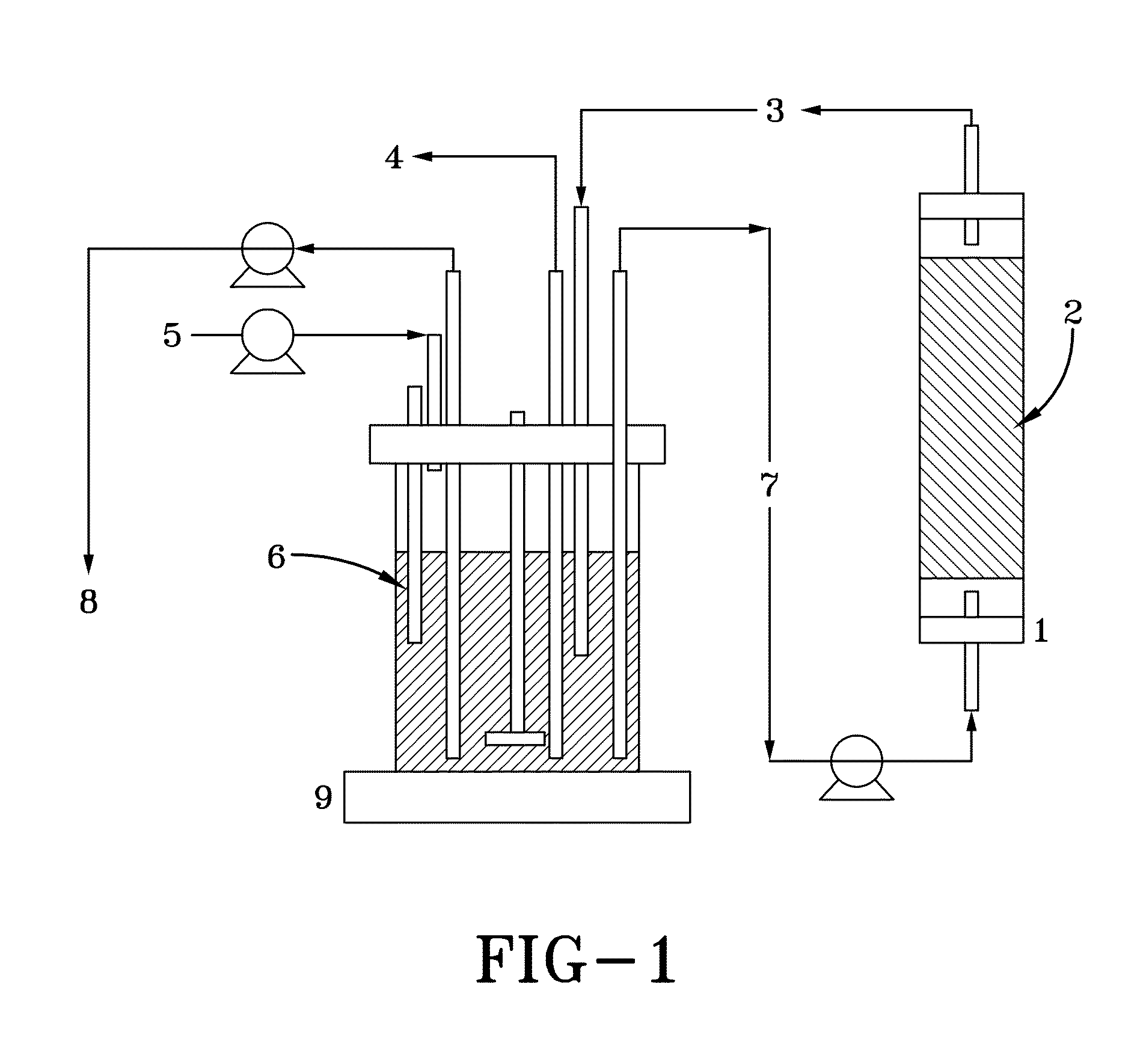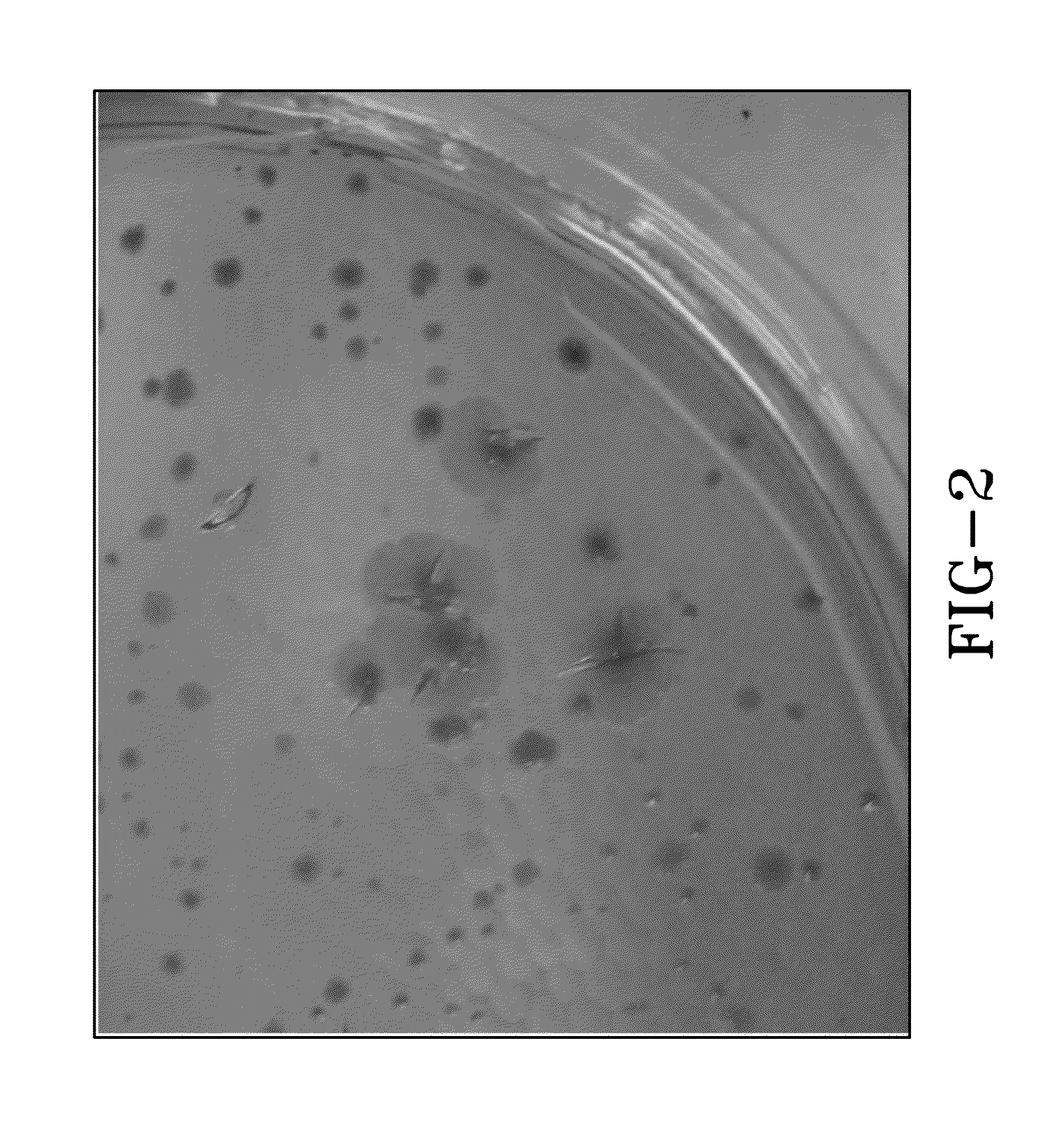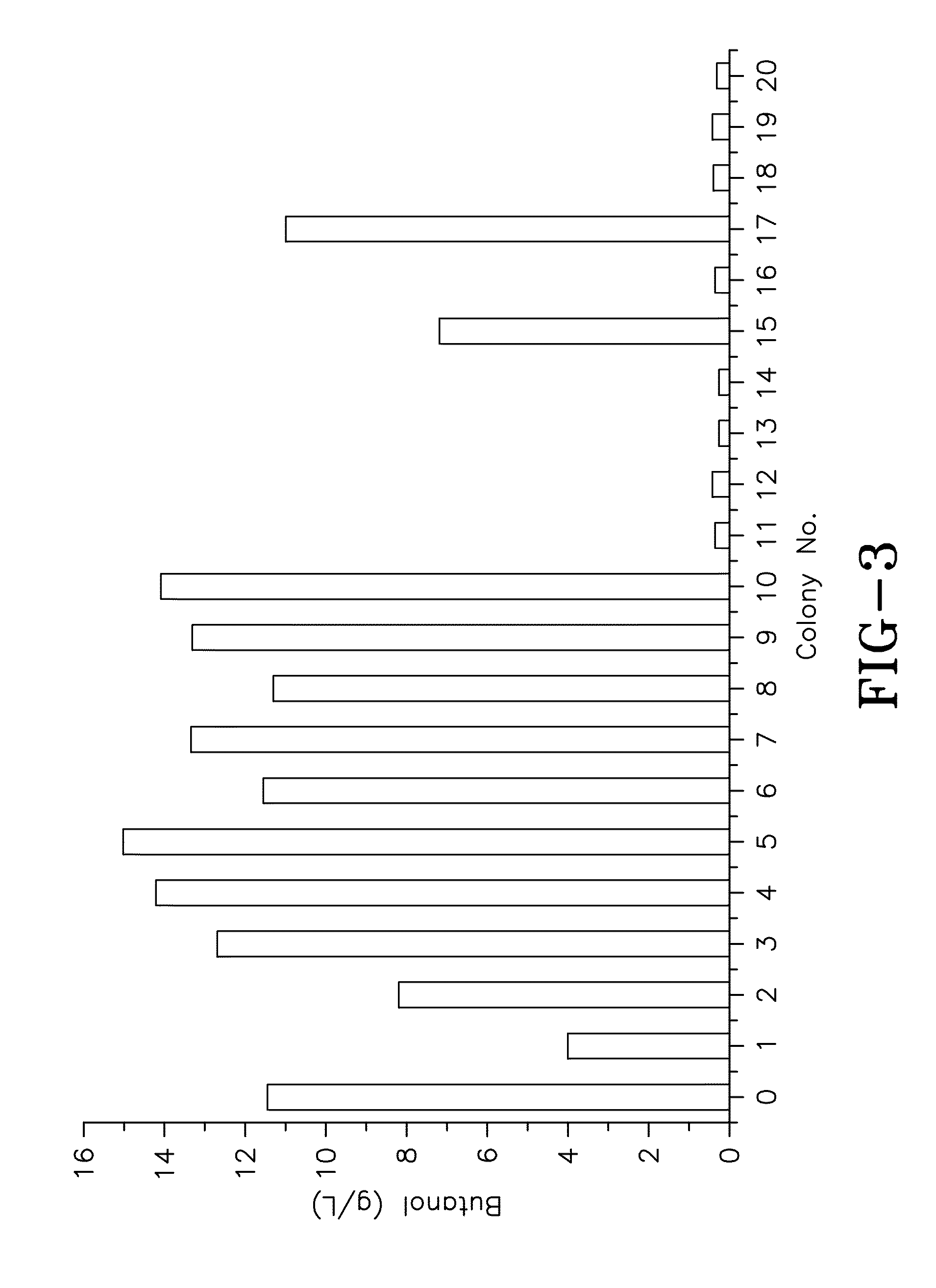Adaptive engineering of clostridium for increased butanol production
- Summary
- Abstract
- Description
- Claims
- Application Information
AI Technical Summary
Benefits of technology
Problems solved by technology
Method used
Image
Examples
example 1
Adaptive Engineering of C. Acetobutylicum Mutant Strain JB200
[0092]C. acetobutylicum (ATCC 55025) cells were immobilized and cultured in a FBB system for over 40 days. The cells of this parental strain were periodically exposed to a high butanol concentration, in order to drive the adaptation towards a higher butanol tolerance. During this period, butyric acid and neutral red were also applied to strengthen acid assimilation and push the electron and carbon flow towards butanol. Cells taken from the fermentor were cultured on CGM agar plates for screening and isolation of hyper-butanol producers. After culturing for several days, cells formed colonies of various sizes on the agar plates. Referring to FIG. 2, a picture of the cell colonies is shown. Colonies of different sizes were randomly selected and tested for their butanol production abilities in batch fermentations carried out in 50-ml centrifuge tubes containing P2 (8% glucose) medium. FIG. 3 shows the comparative butanol prod...
example 2
Butanol Production by Clostridium acetobutylicum JB200 in Fibrous Bed Bioreactor with Gas Stripping
[0128]The ABE fermentation capabilities of JB200 were analyzed. First, the fermentation kinetics in glucose, xylose, and glucose / xylose medium were studied to evaluate the hexose and pentose sugar utilization by the mutant cells. Corn fiber hydrolysate (CFH) containing 71.6 g / L total sugar (39.4 g / L glucose, 23.3 g / L xylose and 8.9 g / L arabinose) was obtained after dilute acid and enzyme hydrolysis. CFH severely inhibited acetone-butanol-ethanol (ABE) production (1.9 g / L) by JB200 due to the inhibitors generated during the severe pretreatment process. Boiling and activated carbon were investigated as a detoxification method for CFH in this study. Referring to FIG. 21, ABE fermentation by JB200 with detoxified CFH is shown. Panel A: consumption of sugars during fermentation; Panel B: ABE production during fermentation. Using detoxified CFH, 8.8 g / L ABE was produced with 38.3 g / L reducin...
example 3
Butanol Production by Clostridium acetobutylicum JB200 in Repeated Batch Fermentations
[0134]To test the long-term stability of JB200 for butanol production, the fermentation was carried out with the FBB operated in a repeated-batch mode for 16 consecutive batches, each for about 2 days, with sucrose as the substrate in P2 medium. In the repeated batch fermentation, the fermentation broth in the reactor system was removed and replaced with a fresh medium about every 2 days, and the cells immobilized. In the FBB were used in the consecutive batches without adding new seeding culture. FIG. 31 is a chart of the concentration profiles of substrate (sucrose) and products (butanol, acetone, ethanol, butyric acid, and acetic acid) for the 16 consecutive batches in the repeated batch fermentation over a period of −33 days. FIG. 32 is a chart of butanol yield and productivity in each of the 16 repeated batches. As can be seen in FIGS. 31 and 32, the fermentation performance was stable and gav...
PUM
| Property | Measurement | Unit |
|---|---|---|
| Temperature | aaaaa | aaaaa |
| Volume | aaaaa | aaaaa |
| Volume | aaaaa | aaaaa |
Abstract
Description
Claims
Application Information
 Login to View More
Login to View More - R&D
- Intellectual Property
- Life Sciences
- Materials
- Tech Scout
- Unparalleled Data Quality
- Higher Quality Content
- 60% Fewer Hallucinations
Browse by: Latest US Patents, China's latest patents, Technical Efficacy Thesaurus, Application Domain, Technology Topic, Popular Technical Reports.
© 2025 PatSnap. All rights reserved.Legal|Privacy policy|Modern Slavery Act Transparency Statement|Sitemap|About US| Contact US: help@patsnap.com



